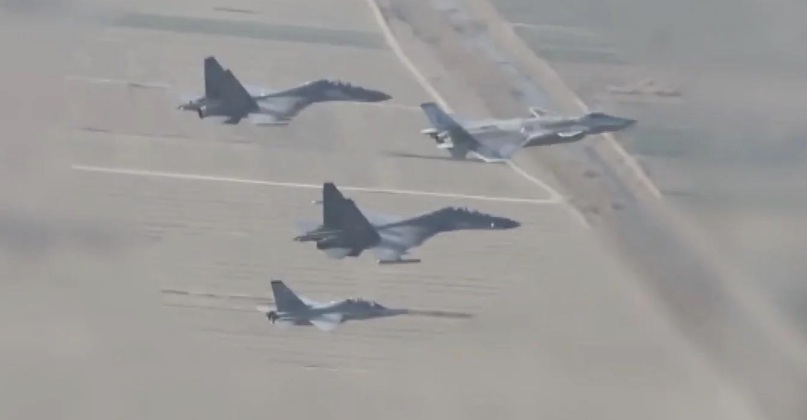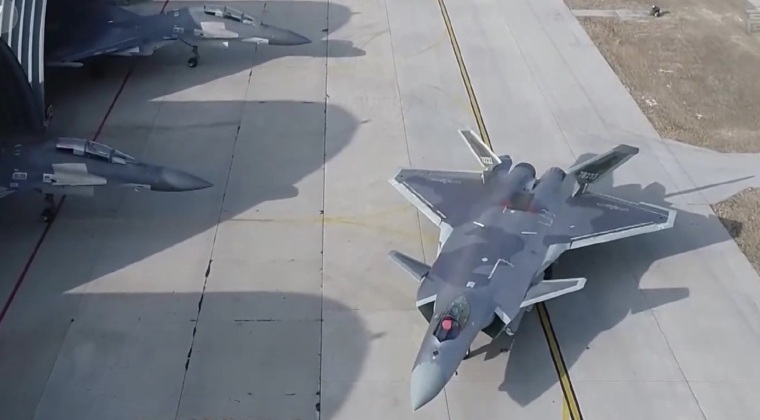News
Chinese J-20 Stealth Fighters Team Up with J-16 Flankers For Large Scale Dogfight Training
The Chinese People’s Liberation Army (PLA) Air Force has deployed its J-20 and J-16 heavyweight fighters for exercises simulating air to air combat. State media outlet CGTN reported that this took place on a large scale with dozens of fighters involved, and that exercises particularly centred on visual range engagements. Both twin engine fighters use airframe designs conceived primarily for air superiority missions, and are in production in parallel – the J-20 at facilities in Chengdu in Sichuan province, Southern China, and the J-16 in Shenyang, Liaoning province, in China’s far northeast. Both fighter classes have significant commonalities in their powerplants, sensors and avionics, and both use the same PL-15 and PL-10 missiles as their primary anti aircraft armaments.
The PL-10 is capable of engaging targets at extreme high off boresight angles beyond 90 degrees and at very long ranges for an infrared guided platform. It was likely the primary armament used in recent exercises, with assessments from Western sources having consistently highlighted that the missile’s capabilities have few analogues in the world in terms of capabilities. British security think tank IISS highlighted that its in the mid 2010s “has placed China among the handful of nations with a defence-industrial base capable of producing such a weapon,” with the missile’s thrust vector controls playing an important role in its performance.

The J-20 is one of two fifth generation fighters in production and fielded at squadron level strength anywhere in the world, and has seen its visual range capabilities improve considerably since the first units were delivered to the air force in 2016. This has included integration of new WS-10C engines and adjustments to its airframe. At short dogfighting ranges the fighter’s use of distributed aperture systems is particularly prized, and allows pilots to see through the walls of the aircraft using in their helmets – a feature unique to it and its American rival the F-35. The fighter recently demonstrated an unprecedented degree of low speed manoeuvrability at the PLA Air Force Open Day in Jilin, making it potentially the most manoeuvrable operational fighter of its generation in service. The J-20 has notable advantages at closer ranges over rival American fifth generation fighters, with the F-35 being a single engine design not well optimised to manoeuvring, while the older F-22 lacks any off boresight targeting capability or distributed aperture systems leaving it at a sharp disadvantage against both newer aircraft.

The J-20 was developed as a direct successor to the J-11B, another twin engine design built primarily for air superiority missions which ended production in 2018. The J-16, rather than being a clean sheet design, is a derivative of the J-11 which is less specialised for air to air operations but benefits from significantly more modern avionics, airframe materials and armaments as well as significant applications of stealth technologies. The J-20 and J-16 are two of four fighter classes currently being built for the People’s Liberation Army, alongside the J-10C lightweight single engine fighter and the new J-15B, a more sophisticated derivative of the J-11B designed to operate from aircraft carriers. The J-20 is currently in service in eight regiments in the PLA Air Force, while the J-16 operates in an estimated 11 regiments, reflecting a rapid rate of procurement over the past five years.












